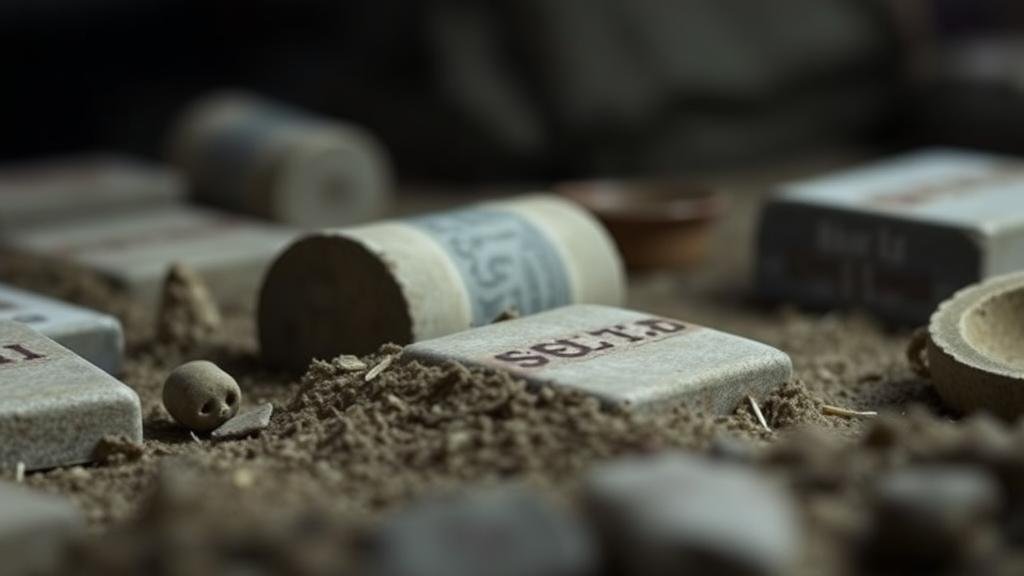Using Data From Historical Plague Burials to Locate Medical Relics and Tools
Using Data From Historical Plague Burials to Locate Medical Relics and Tools
The study of historical plague burials offers a wealth of information that can illuminate past medical practices, tools, and relics used during times of epidemic crisis. By analyzing burial patterns, associated artifacts, and demographic data, researchers can derive insights that not only reflect the societal impact of plagues but also provide a roadmap for locating significant medical relics and tools used in these desperate times.
The Historical Context of Plague Burials
Throughout history, epidemics have forced societies to adapt rapidly in terms of public health measures and medical practices. The Black Death of the 14th century, for example, resulted in an estimated 25 million deaths across Europe. This catastrophic event led to distinct burial practices, which are evident in archaeological findings. Graves from this period often reveal clustering patterns indicative of mass burials, prompting investigations into the geographical and temporal aspects of these events.
Modern archaeologists have used historical texts in conjunction with physical evidence to create databases cataloging plague grave sites. These databases often contain critical metadata such as location, burial depth, and any discovered artifacts. For example, the Black Death grave in East Smithfield, London, revealed thousands of bodies, which allowed researchers to analyze the demographics of victims, including age and sex, providing context to the medical and societal response at that time.
Data Analysis Techniques
To extract meaningful data from historical plague burials, several methodologies can be employed:
- Geospatial Analysis: GIS (Geographic Information Systems) technology is increasingly utilized to map burial sites and analyze their spatial relationship to contemporary medical facilities or known relics of the era.
- Bioarchaeological Analysis: Osteoarchaeologists often conduct analysis on skeletal remains to glean information about health conditions, nutritional status, and even disease pathology during the plague period. This data can inform researchers about the medical tools that might have been prevalent.
- Artifact Typology: Assessing grave goods can reveal insights into medical practices. For example, if a grave contains a cluster of surgical tools, this may indicate a medical practitioner’s burial, offering leads on medical practices of that time.
Locating Medical Relics and Tools
The fossils of history often lead to significant medical discoveries. information gleaned from grave data can help pinpoint locations where significant medical relics and tools may still be hidden. For example, in the case of discovering a set of 14th-century surgical tools in Field D of the East Smithfield site, researchers hypothesized the tools belonged to a medical practitioner buried alongside plague victims. Such findings can guide modern archaeologists in targeted excavations through:
- Prioritizing High-Density Grave Sites: Locations with large quantities of human remains often correlate with past medical activity to combat the epidemic, guiding explorations for buried medical artifacts.
- Collaboration with Historical Medical Libraries: Historians can provide insight into known burial sites of physicians or presumed medical practitioners based on historical documents, further narrowing excavation efforts.
- Integrated Interdisciplinary Approaches: Combining history with bioinformatics allows researchers to better understand human responses to past epidemics and their medical tools.
Case Studies: Successful Discoveries
One prominent example of using data from plague burials to expose medical artifacts is the work done in Venice, Italy. Researchers uncovered a mass grave believed to house victims of the bubonic plague, paired with remnants of medical tools like scalpels and forceps. Through meticulous analysis, historians were able to ascertain that these tools were used by Venetian physicians renowned for their early practices of quarantine and sanitation. This not only provided insight into medieval medical practices but guided further excavation of surrounding sites based on the burial patterns discovered.
Also, the excavation of plague pits in Berlin led to the identification of burial sites that contained not only human remains but also medicine bottles and potions allegedly used to treat the sick. analysis revealed the rudimentary but rather sophisticated understanding of disease that existed at the time, and it allowed archaeologists to target other burial sites for potential discoveries.
Conclusion and Actionable Takeaways
Using data from historical plague burials presents a unique opportunity to unearth lost medical knowledge and tools from our past. Researchers across disciplines can harness this data to locate medical relics that illustrate the evolution of public health responses. With the integration of geospatial analysis, bioarchaeology, and artifact typology, the arts of excavation now have the might of modern technology and interdisciplinary collaboration fueling progress.
In summary, the exploration of plague burial sites highlights the potential to discover invaluable medical relics and deepen our understanding of historical medical practices while preserving these artifacts for future generations. Researchers and historians are encouraged to continue fostering partnerships with archaeologists to explore these sites, prioritize excavation based on accumulated data, and unveil the stories hidden beneath the ground.



